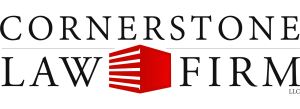Dangerous Dogs in Pennsylvania
Pennsylvania’s Dangerous Dogs Statute aims to take the bite out of potentially dangerous encounters with canines. A common misconception about dogs is that only certain breeds of dogs pose a threat of serious bodily injury, or that a dog must be a certain size to be dangerous, but this is not the case. Just browse through the state’s current Dangerous Dog Registry, and you might be surprised to see your favorite miniature breed on that list. This is because the statutory definition of a dangerous dog is based solely on the animal’s record of interactions with people and other domesticated animals. A single unprovoked attack on a person could be enough for a judge to find a dog to be dangerous and its owner or keeper subject to a host of additional legal requirements.
How can a person be convicted of harboring a dangerous dog in Pennsylvania?
Any person found to be harboring a dangerous dog is guilty of a summary offense and will be required to take certain measures with the goal of ensuring public safety. If the owner of the dog is convicted in summary court proceedings, the owner or keeper of the dog must confine the dog as defined by the statute, which includes certain controls while outside confinement. The owner or keeper also is prohibited from selling, offering to sell, or giving away the dog. If the owner or keeper intends to keep the dog after the proceedings are completed, he or she must register the dog with the Department of Agriculture. Pursuant to Chapter 27 of Pennsylvania’s Title 7 on agriculture, this registration will require proof of the issuance of a surety bond as well as a certain level of liability insurance coverage. Additionally, the dog must be confined and controlled according to requirements of Chapter 27 for the duration of its life.
The required “bond” or insurance policy is typically prohibitively expensive. As a result, the practical effect of being convicted of harboring a dangerous dog is to have to euthanize the dog. This is obviously traumatic for many dog owners, who would do anything to keep their pet safe.
If an encounter with a dog has risen to the level of a judge finding that the animal is dangerous, the matter must be considered serious regardless of the dog’s breed, size or previous history of gentle behavior. Although proper professional training can help correct a dog’s behavior, the owner or keeper of the dog is subject to all applicable rules for as long as the dog is kept regardless of whether any other such incident occurs again. From posting clear notice on the property of the dangerous dog’s presence to microchipping and muzzling, monetary restitution to the victim is not the end of the process if your dog injures a person or another domesticated animal. That is why it is prudent for all dog owners to take prophylactic measures to ensure that these types of incidents do not occur.
What do I do if I’ve been attacked by a dog?
If you’re the victim of a dog bite, you have certain personal injury rights. You can bring suit against the owner or keeper of the dog. But Pennsylvania does not embrace a “strict liability” approach to these cases. In other words, you must prove the owner or keeper was negligent in the way they kept the dog on the occasion in question. Failing to keep a dog on a leash in a public place, failing to secure the dog behind a fence or in a home, or failing to keep the dog appropriately fed can all contribute to a negligence finding.
Conclusion
If you’ve been charged with harboring a dangerous dog, it’s important to defend the case rather than plead guilty. Defending the case can involve showing that the dog was provoked into attacking or not “at fault” in a given incident. But it’s best to keep your dog out of this situation to begin with, if you can. Keep him appropriately secured and away from tempting situations if at all possible. If you have questions, call the attorneys at Cornerstone Law Firm for a consultation on your unique situation.



